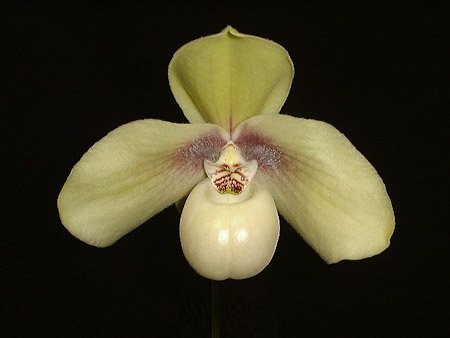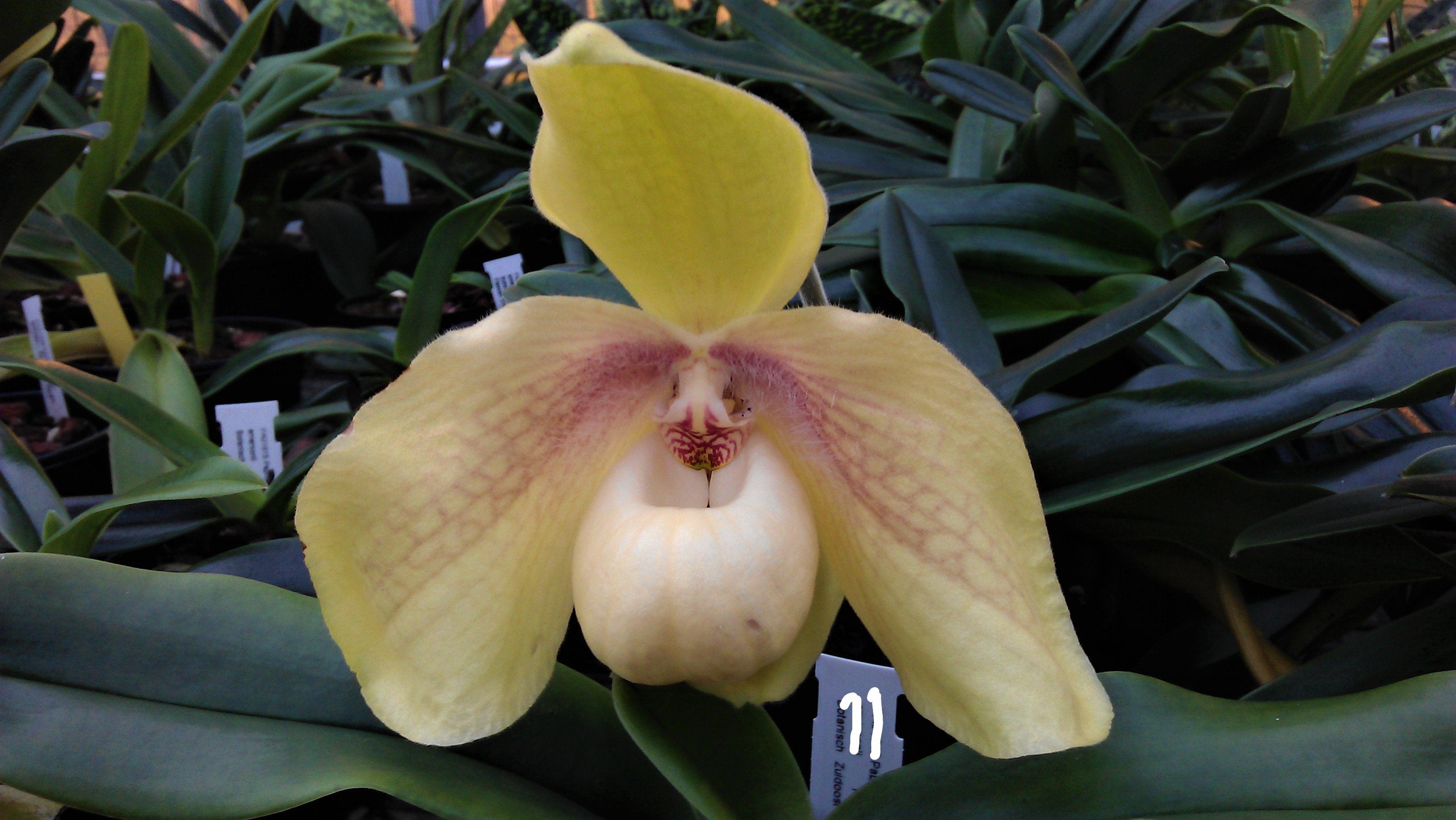The Paphiopedilum hangianum 'Select' is among the most imposing species within the genus. This select form is known for its exceptional flower size, rich color and distinct fragrance. An absolute eye-catcher for the advanced collector looking for something both rare and special.
Origin
Paphiopedilum hangianum is a botanical species native to northern Vietnam, where it grows on limestone plateaus at altitudes of 1200 to 1600 meters. The 'Select' form refers to plants specially selected for their superior flower shape, color intensity and sometimes larger inflorescences, often from cultivated lines from old mother plants.
Characteristics
This species is beloved for its extremely large, butter-yellow flowers with thick, fleshy petals and a distinctive bulbous pouche structure. The flowers can grow up to 15 centimeters wide. Some Paphiopedilum makes hangianum unique is its pleasant fragrance - a rarity within the genus. The foliage is broad, leathery and gray-green, forming a compact rosette.
The 'Select' variety often displays an extra symmetrical flower shape, a more intense yellow color and better flower position on the stem than standard specimens.
Care
Light
Paphiopedilum hangianum likes bright, indirect light. Avoid direct sunlight, especially in the afternoon hours, to prevent leaf burn.
Temperature
This species prefers moderate temperatures: between 20-25°C during the day and around 15°C at night. Short periods of slightly cooler nights can stimulate flowering.
Substrate
Use an airy, well-draining substrate based on fine bark, peat moss and some coarse tree fern fiber. This species likes constant, light moisture around the roots, but should never be wet for long periods of time.
Humidity
A humidity of 60-80% is ideal. In drier environments, using a humidifier or placing the plant on a damp pebble tray will help.
Watering
Preferably give demineralized water (possibly mixed with clean rainwater), and keep the substrate slightly moist. Never let the substrate dry out completely between waterings. However, avoid stagnant water in the pot. Tap water can cause damage to the orchid due to the wrong proportions of minerals in the water.
Nutrition
During the growing season (spring to early fall) weekly, apply a highly diluted orchid fertilizer (¼ of the recommended dosage). During the dormant period (winter), feeding once a month is sufficient.
Flowering
Paphiopedilum hangianum usually blooms in spring or early summer. The inflorescence is solitary, with one large flower per stem. Under ideal conditions, the plant may bloom annually. The flower often lasts for several weeks to months, depending on temperature and light.
Note: This species is particularly sensitive to excessively wet roots and requires experience with Paphiopedilum-culture. Not suitable for absolute beginners, but a dream specimen for those who want to take their collection to the next level.


